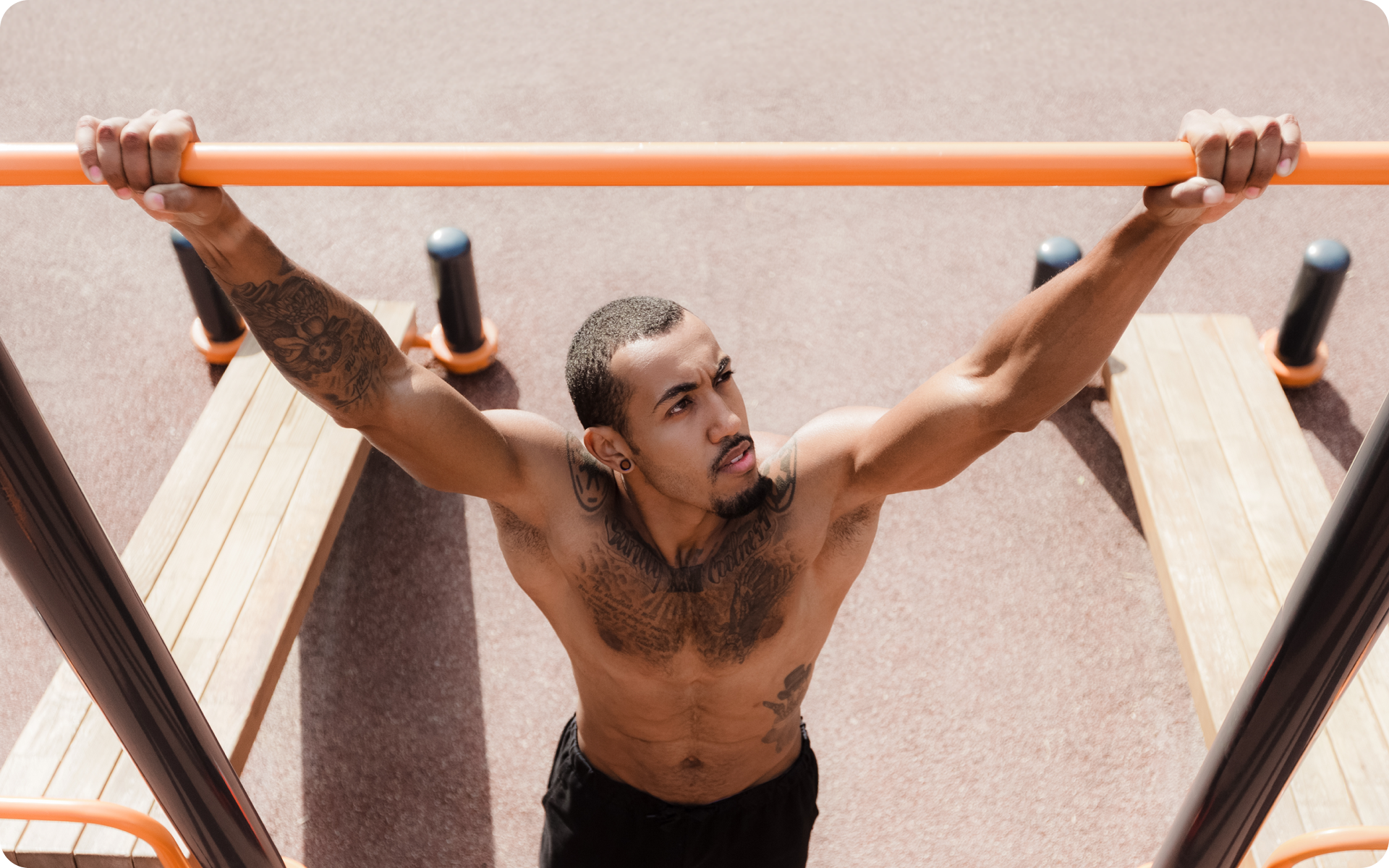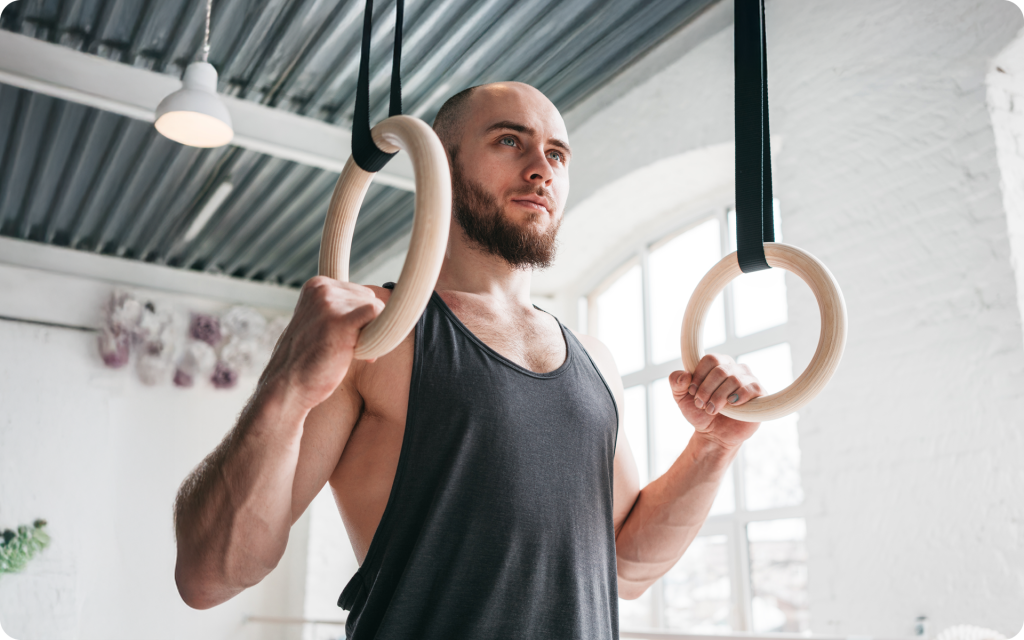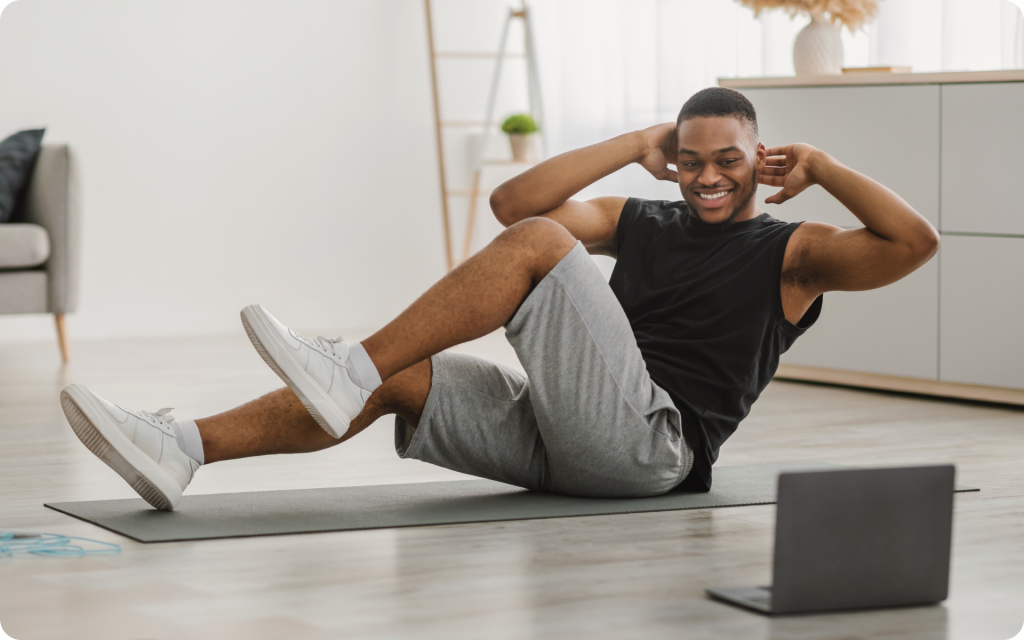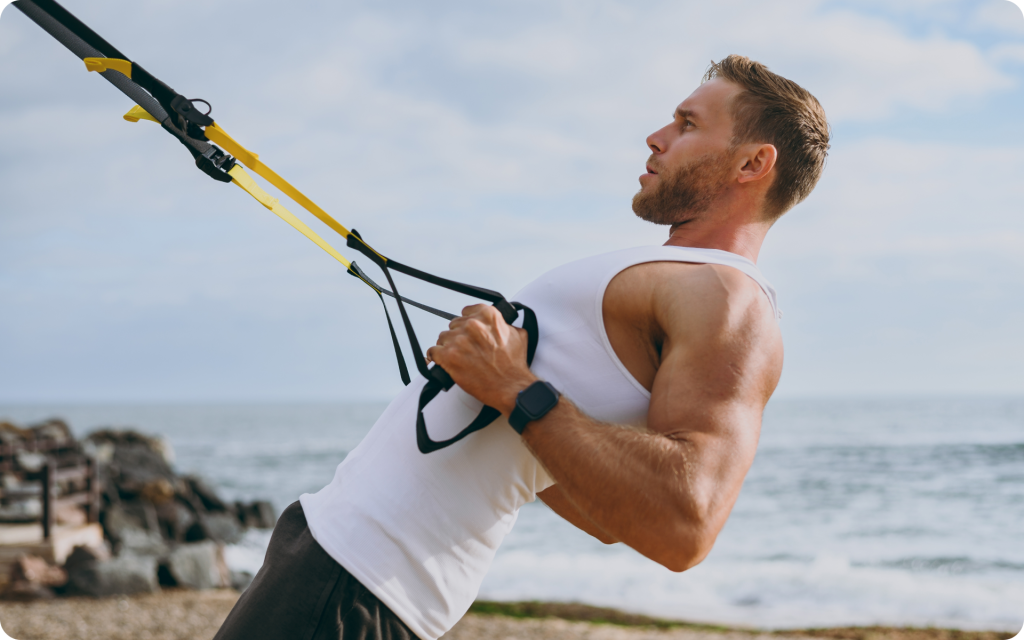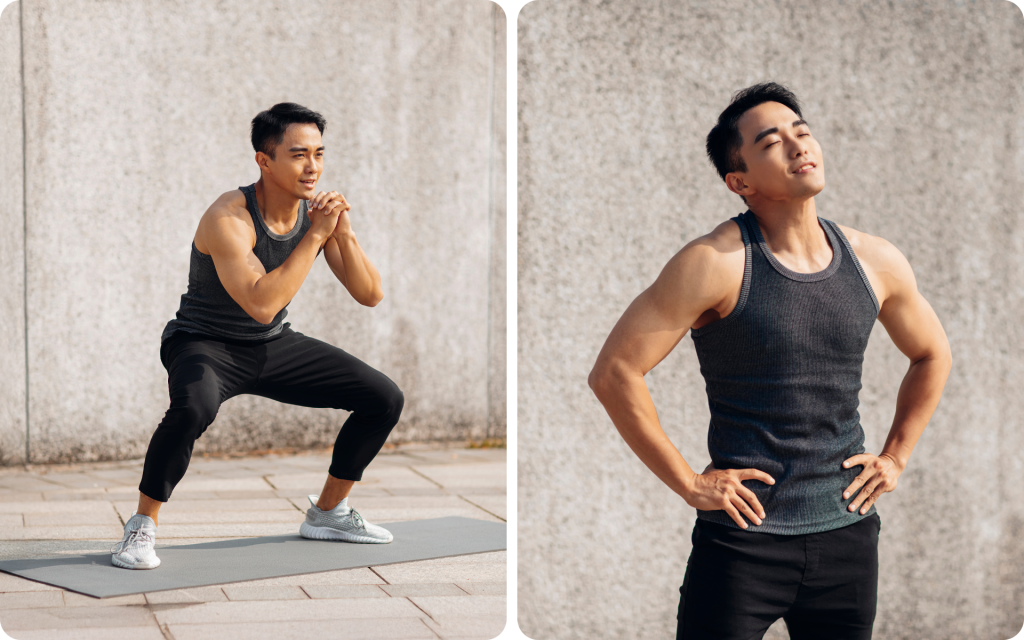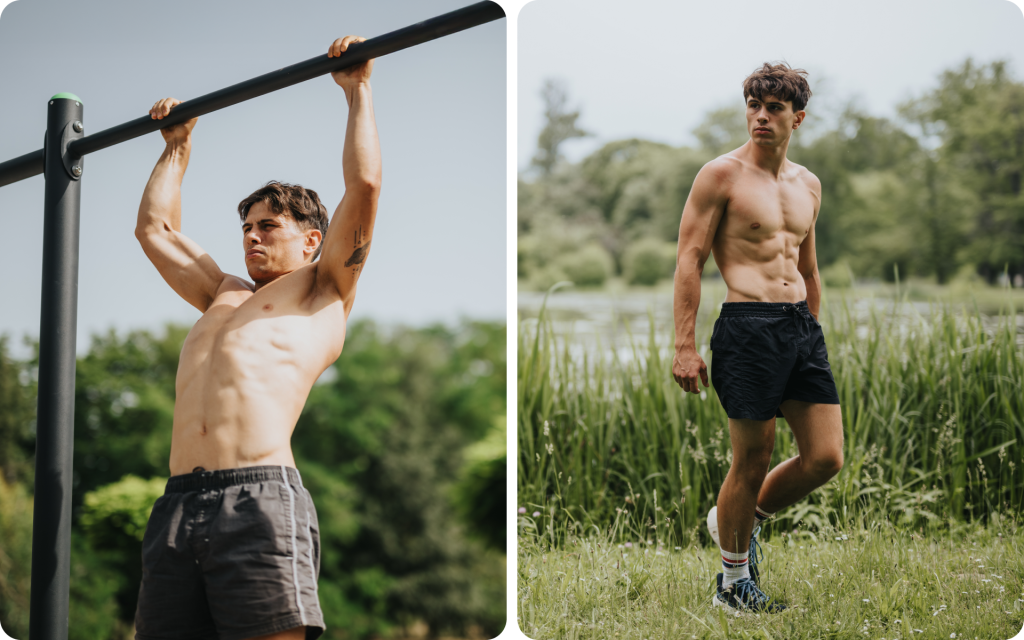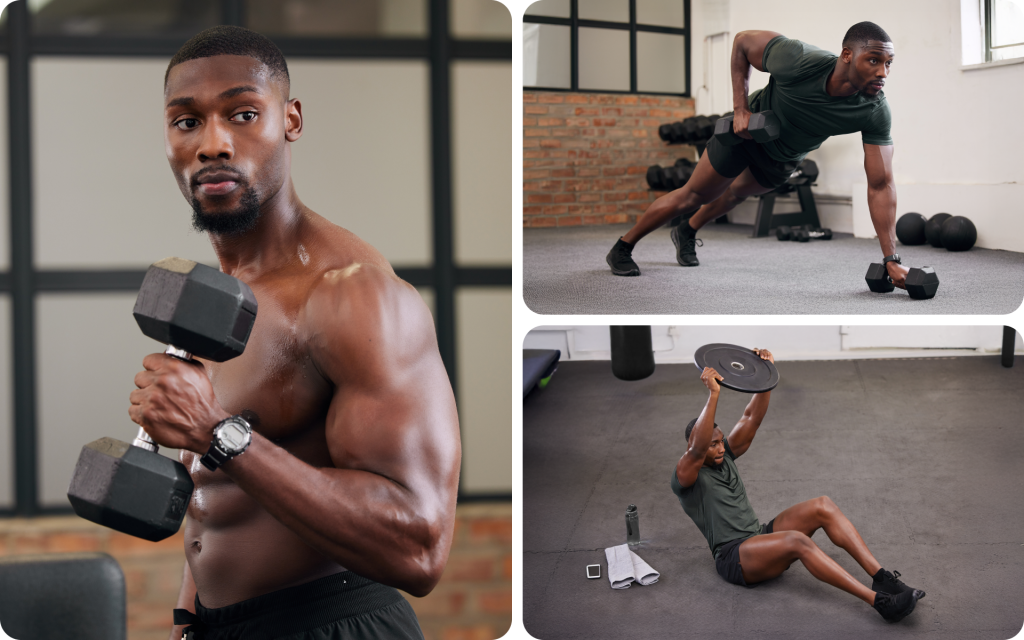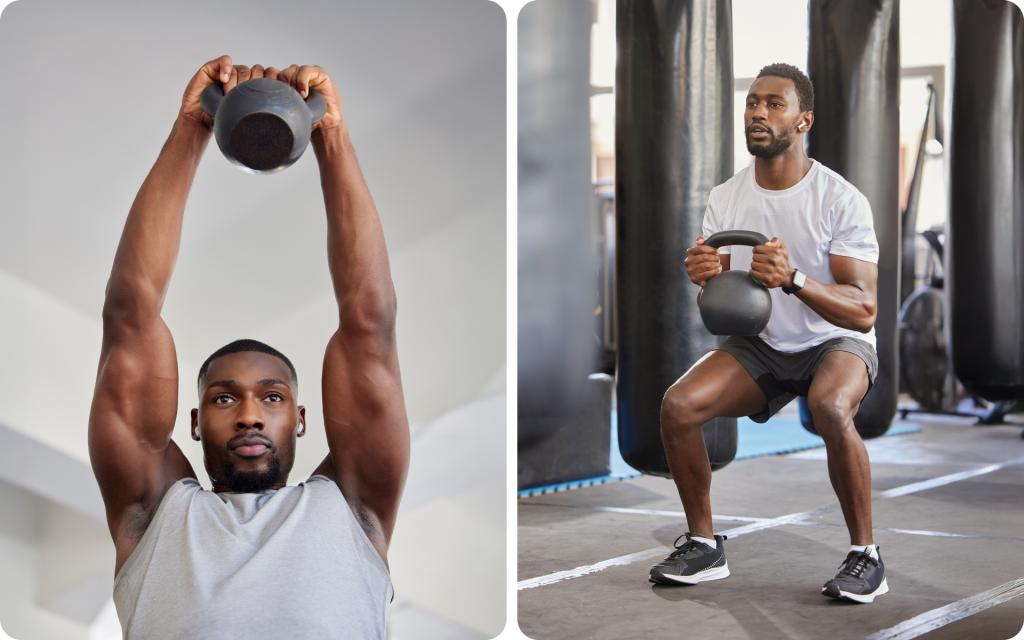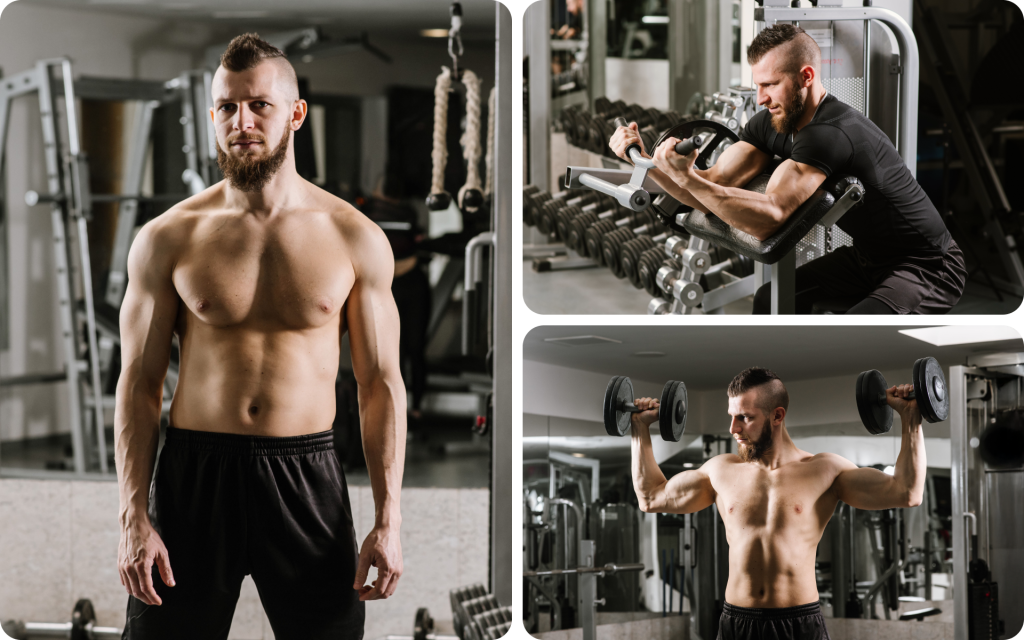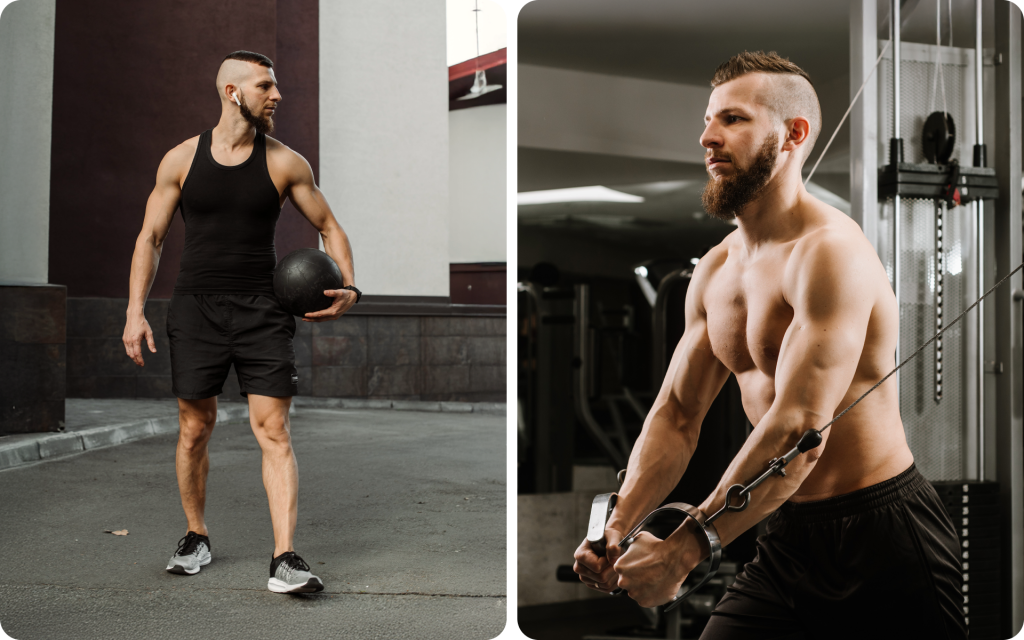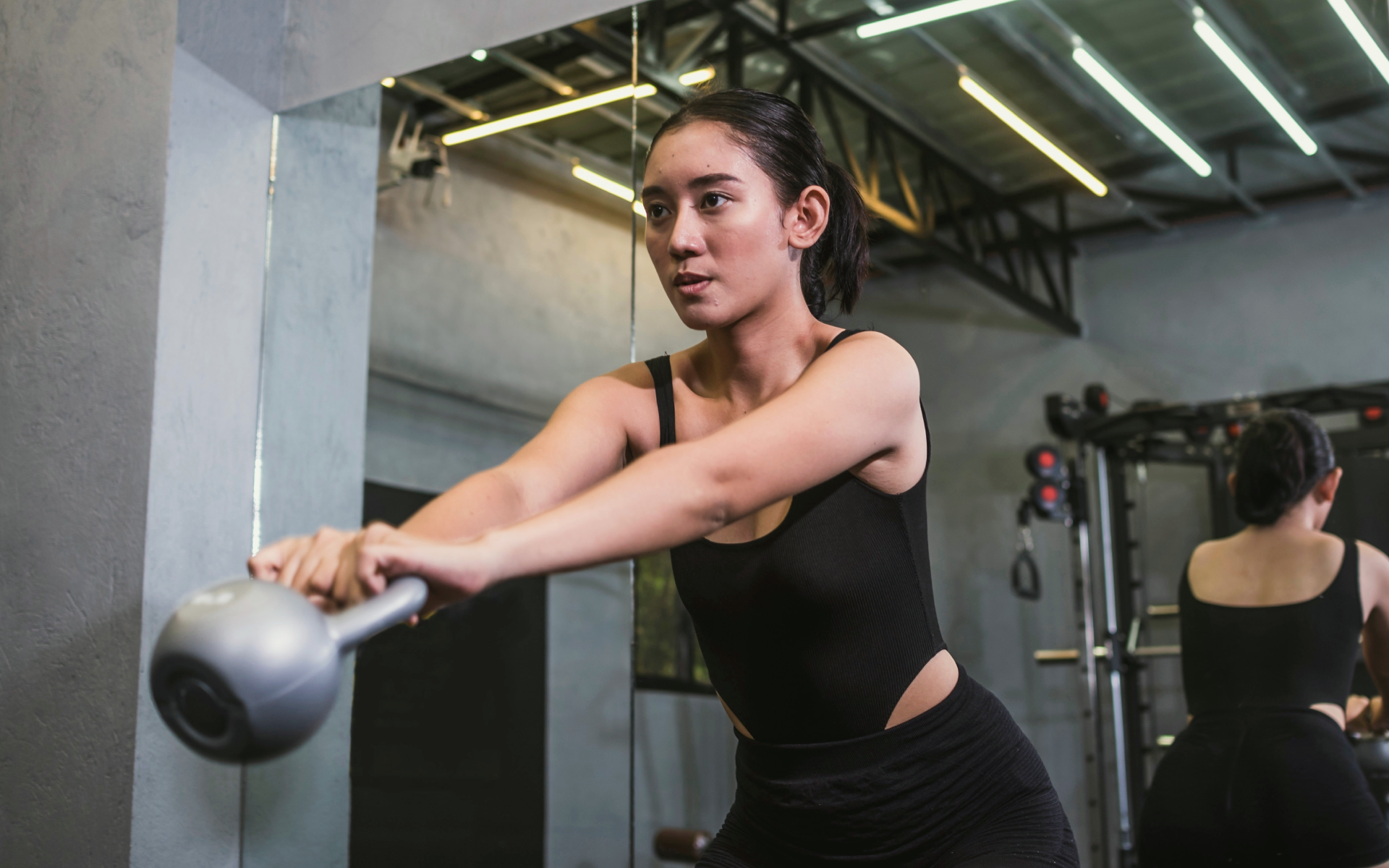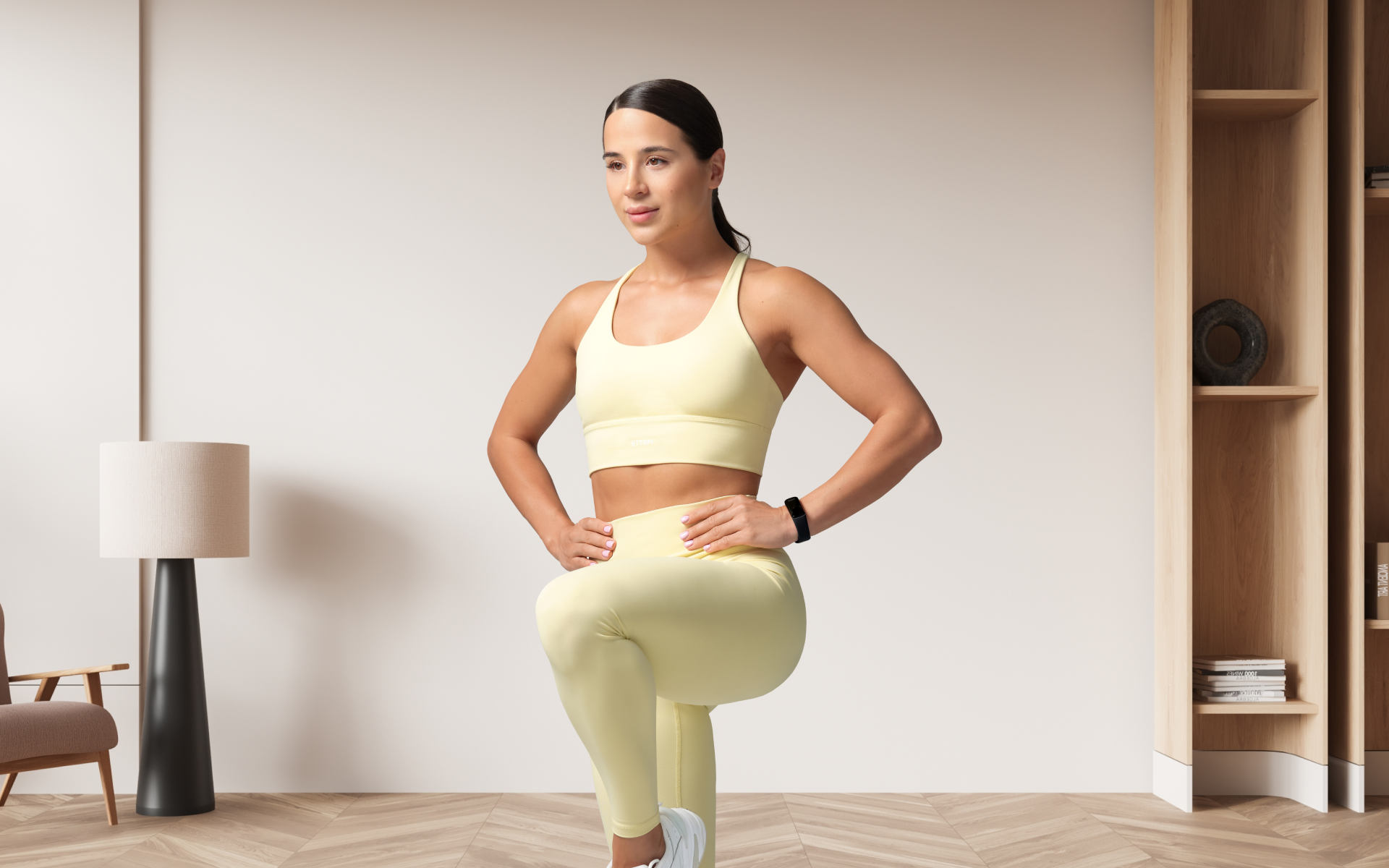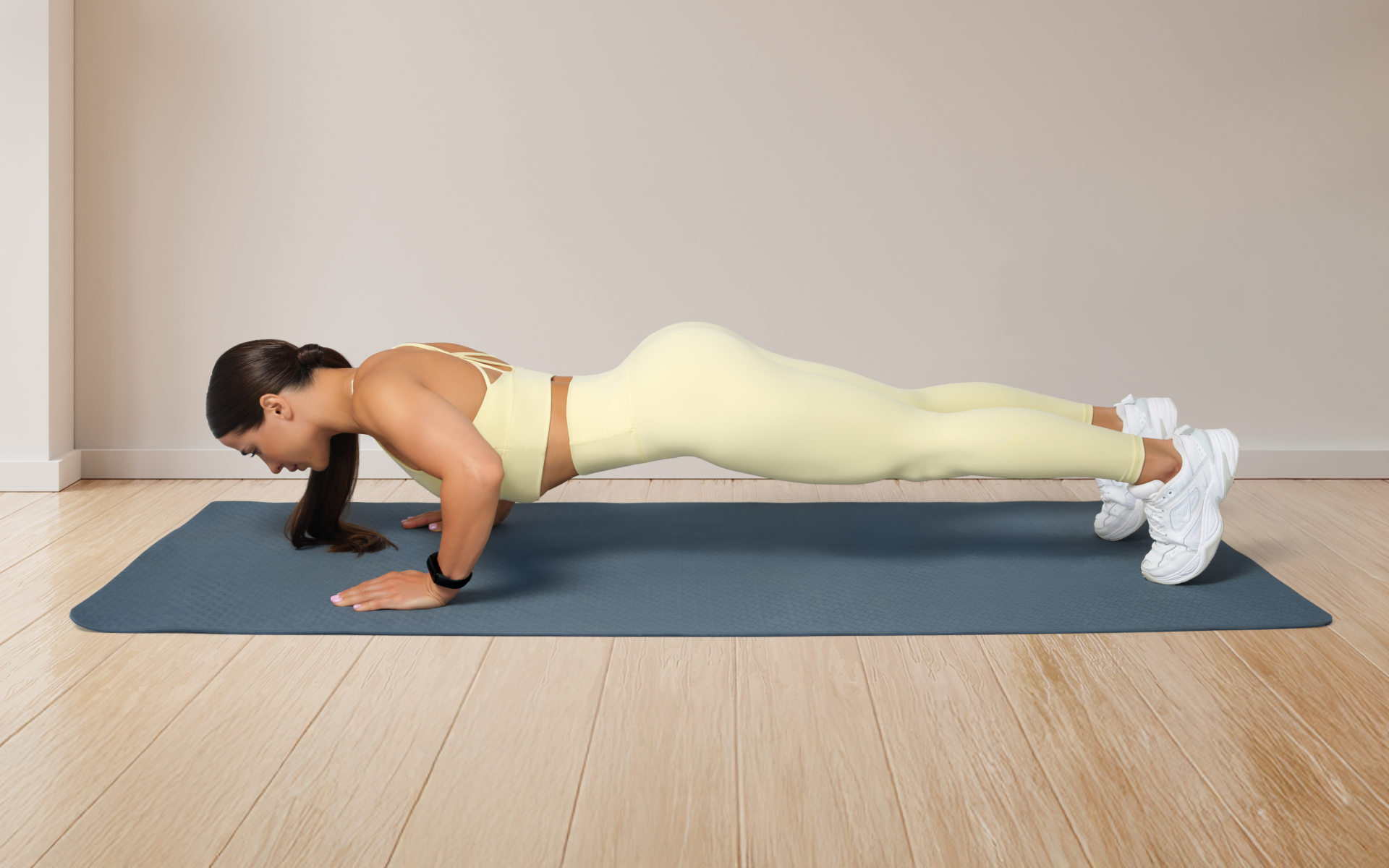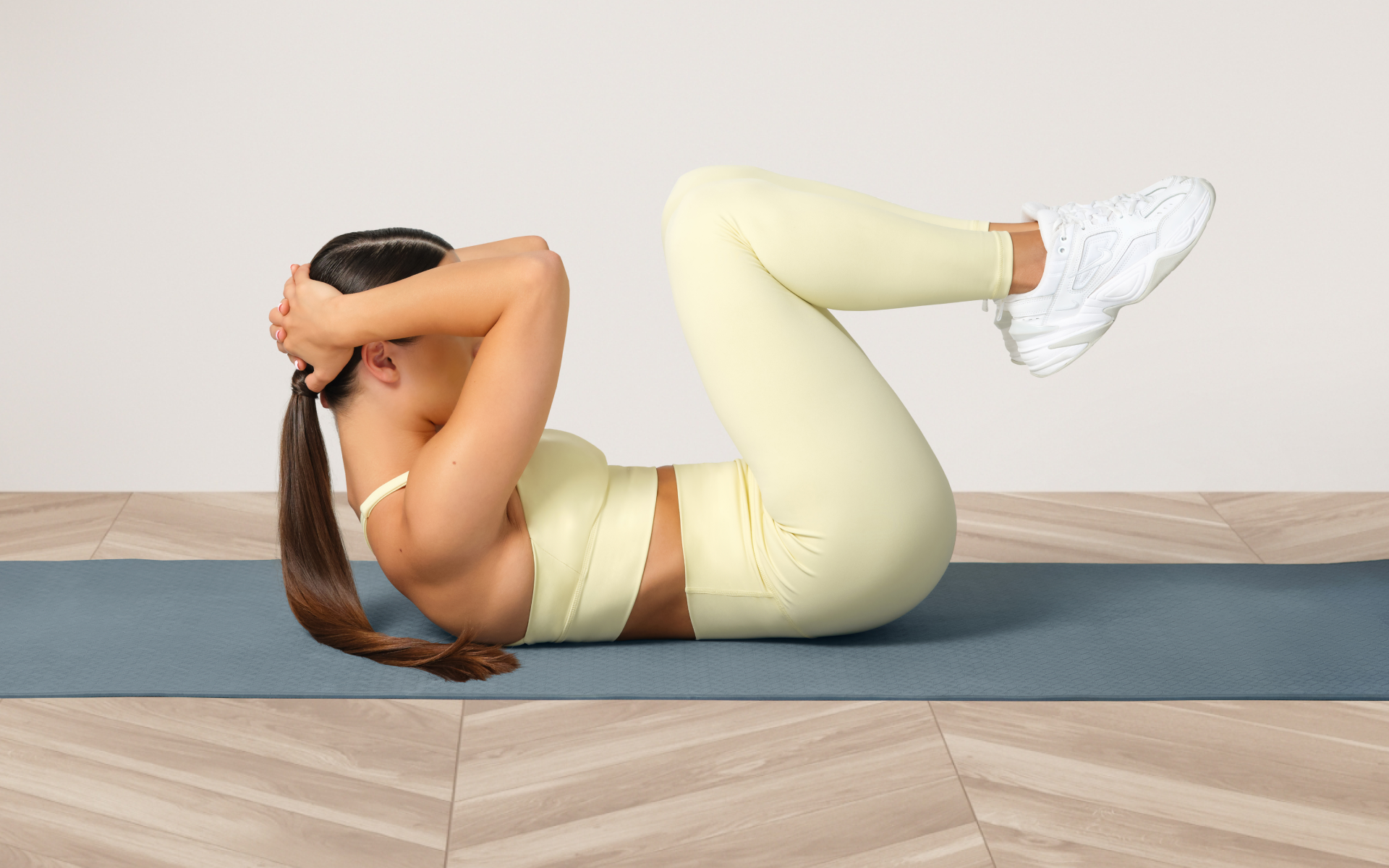When it comes to designing a workout routine, one size rarely fits all. Your goals, schedule, and preferences play a major role in determining what type of program will help you achieve consistent progress while reducing the risk of burnout or injury.
One approach widely adopted by both beginners and advanced athletes is split training. This method segments your workout routine into specific focus areas, targeting certain muscle groups or movement patterns on designated days
Among the variety of split-training regimens, the upper-lower split stands out as a balanced, adaptable framework that’s both straightforward and effective.
Simply put, this split alternates between workouts that train your upper-body muscles (such as your chest, back, shoulders, and arms) and those that target your lower body (including the quads, hamstrings, glutes, and calves).
What makes this approach popular is its flexibility – it accommodates different experience levels while providing plenty of room to adjust intensity, recovery, and volume based on individual needs.
In this article, we unpack the details of the upper-lower split, including recommended exercises and practical adjustments, while addressing common questions along the way.
Are Upper-Lower Splits Effective?
Upper-lower splits are undeniably effective for many individuals. They offer a balanced approach that aligns well with principles of progressive overload, recovery, and adaptability.
You may choose this split because of:
- A Balanced Approach to Training Volume and Frequency
Upper-lower split routines distribute training in a way that allows a balanced focus on all major muscle groups. By dedicating separate sessions to upper- and lower-body muscles, you ensure each group receives targeted attention without being shortchanged due to time or fatigue.
This structure supports the principle of training frequency, allowing you to work each muscle group 2-3 times a week. Research has consistently shown that this frequency range is effective for building both strength and muscle mass while offering adequate recovery time (1).
- Supporting Strength Gains and Neuromuscular Efficiency
An upper-lower split can be particularly effective for strength development. With fewer muscle groups to target on any given day, you can allocate more energy and effort to compound lifts such as the squat, deadlift, bench press, and pull-ups.
These heavy, multi-joint movements not only promote full-body strength but also improve neuromuscular coordination, which helps your nervous system efficiently recruit muscle fibers. This efficiency translates to greater force output over time, which is ideal for lifters who are prioritizing strength gains (2).
Reasons why BetterMe is a safe bet: a wide range of calorie-blasting workouts, finger-licking recipes, 24/7 support, challenges that’ll keep you on your best game, and that just scratches the surface! Start using our app and watch the magic happen.
- Promoting Hypertrophy Through Targeted Overload
For those who are seeking hypertrophy (muscle growth), the upper-lower split offers a practical structure to progressively overload each muscle group. By alternating between upper- and lower-body training, you can incorporate a variety of training variables, such as:
- Training volume
- Alternating intensity and load
- Isolation work that is specific to each region of the body
For example, you can prioritize heavier compound lifts early in the week, followed by lighter accessory exercises targeting specific muscles later. This diversity in loading and movement patterns will keep your muscles challenged and foster consistent growth (3).
- Fostering Recovery and Minimizing Overtraining
Recovery is as important to progress as the workouts themselves (4). Splitting your sessions into upper and lower body focuses builds recovery into the program.
While your lower body recovers, your upper body can train, and vice versa. This reduces the likelihood of overtraining a single muscle group and mitigates symptoms such as:
- Fatigue
- Muscle soreness
- Diminished performance
For individuals who are managing busy lifestyles or have high physical demands, such a structure can help sustain training consistency without excessive physical strain.
- Adaptability for Different Schedules and Experience Levels
One of the standout features of an upper-lower split is its adaptability. Whether you’re training 3 days a week or 6, this split can be configured to fit your schedule.
- Beginners often start with a 4-day plan (2 upper-body days, 2 lower-body days)
- Advanced lifters may add more frequency or integrate specific focus days (e.g. an accessory or mobility day)
This flexibility makes the upper-lower split an accessible yet scalable option that caters to a wide range of fitness goals and preferences.
- Good for Habit Formation
From a neuroscience perspective, the predictability of an upper-lower split can benefit mental focus and habit formation. This is essential as consistently repeating movement patterns helps reinforce neural pathways, a process that is known as “neuroplasticity” (5).
In addition, alternating focus between the upper and lower body reduces decision fatigue, which makes workouts more intuitive to plan and execute.
- Limitations That Should Be Considered
Although the upper-lower split is effective, it isn’t the perfect solution for everyone. If you’re training fewer than 3 days a week, this approach may not allow sufficient stimulus for each muscle group, and a full-body program may be more efficient.
In addition, this split may require modification for athletes or individuals with sport-specific goals in order to be aligned with movement patterns or energy demands that are unique to their disciplines.
Read more: Calisthenics Workout for the Back: The Complete Exercise Guide
Is an Upper-Lower Split Enough Volume?
Training volume refers to the total amount of work you perform during a workout or throughout the week and is often calculated as the number of sets multiplied by repetitions and load.
Research has consistently indicated that performing 10-20 working sets per muscle group per week is generally effective for muscle growth and strength (1). However, the ideal volume depends on factors such as:
- Training status
- Fitness goals
- Recovery capacity.
Depending on your training history, you may need more or less training volume to see optimal results:
- Beginners often benefit from the lower end of this range (10 sets)
- Advanced lifters may require more stimulus to continue progressing
Our previous post goes into great detail about the bodyweight lower body workout.
How an Upper-Lower Split Meets Volume Needs
The upper-lower split is inherently structured to provide sufficient training volume by dividing the body into upper and lower regions, each targeted at least twice a week.
For instance, a typical 4-day split (2 upper-body days and 2 lower-body days) allows you to distribute 10–20 sets per muscle group across multiple sessions.
This approach aligns well with evidence-based volume recommendations and minimizes the risk of overloading a single workout, which ensures focused and efficient effort.
For example:
- Upper-Body Days may include 4-8 sets each for the chest, back, shoulders, and arms.
- Lower-Body Days could focus on 4-8 sets each for the quads, hamstrings, glutes, and calves.
This format prioritizes workload balance while accommodating recovery needs.
Training Goals Influence Volume Requirements
Your individual goals dictate what constitutes “enough” volume within this framework:
- Strength Goals: For strength-focused athletes, fewer reps with heavier loads are typically more effective (6). An upper-lower split excels here by allowing adequate recovery between high-intensity, compound movements such as squats and bench presses.
- Muscle Hypertrophy (Growth): Hypertrophy-focused individuals often need moderate to high training volumes (7). Splitting this volume across two sessions per muscle group every week prevents over-fatiguing a single muscle group during any one workout, which ensures higher quality sets.
- Endurance or Maintenance: A lower weekly volume, such as 10 sets, may suffice for maintaining overall fitness or supporting endurance training (8).
Heavy, moderate, and light loads are defined as a percentage of an individual’s one-repetition maximum (1RM), which is the maximum amount of weight a person can lift for one complete repetition of a given exercise.
- Heavy load: Greater than 85% of 1RM. If your 1RM for a squat is 200 lbs, a heavy load would be lifting 170 lbs or more.
- Moderate Load: 65-85% of 1RM. For a 1RM of 200 lbs, a moderate load would be lifting 130-170 lbs.
- Light Load: Less than 65% of 1RM. For a 1RM of 200 lbs, a light load would be lifting less than 130 lbs.
For those who don’t use 1RM percentages, the rate of perceived exertion (RPE) scale can be a helpful alternative. For example:
- Heavy: RPE 8-10 (very hard to maximal effort)
- Moderate: RPE 6-7 (moderately hard)
- Light: RPE 5 or below (easy to somewhat hard)
Experience level significantly impacts how much volume you can handle:
- Beginners often respond well to lower training volumes due to their heightened sensitivity to stimulus (9). A 4-day upper-lower split with lower intensity and volume sets (e.g. 8-12 sets per muscle group weekly) is usually sufficient.
- Intermediate and Advanced Trainees may require higher volumes (closer to 15-20 sets per group per week) to continue progressing (6). Adjustments such as additional upper or lower days, or incorporating higher-rep accessory work can help meet these needs while still adhering to the split.
When the Upper-Lower Split May Fall Short
Despite its versatility, the upper-lower split may not always deliver adequate volume for individuals who train less than four days per week.
If you only train twice a week, this split would likely fall below the recommended stimulus for optimal results.
For those with limited gym time, a full-body workout approach may provide more efficient coverage of all major muscle groups.
Sport-specific athletes or individuals with unique movement demands may also find that volume distribution in this split doesn’t align perfectly with their needs. Tailoring the split by adding accessory or mobility-focused sessions can address such gaps.
Explore our upper body calisthenics routine that can build strength, stability, and control using your own body weight.
How Many Times a Week Should I Do Upper-Lower Splits?
Most individuals find success with an upper-lower split that is performed 4 days per week. This typically includes two upper-body sessions and two lower-body sessions, providing balanced volume across all major muscle groups. An example training week may look like this:
- Monday – upper body
- Tuesday – lower body
- Wednesday – rest
- Thursday – upper body
- Friday – lower body
- Saturday and Sunday – rest
This schedule leaves ample time for recovery between sessions.
Whether you’re a workout beast or just a beginner making your first foray into the world of fitness and dieting – BetterMe has a lot to offer to both newbies and experts! Install the app and experience the versatility first-hand!
What Is a Dynamic Upper-Lower Split Workout Routine?
With this split, you’ll train for 2 days in a row, rest for one, and train for another 2 days, before resting for 2 days.
Upper-Body Day (Day 1)
- Pull-Ups (or Lat Pulldown): 4 sets of 8-10 reps
2. Bench Press: 4 sets of 6-8 reps
3. Dumbbell Rows: 3 sets of 10-12 reps per arm
4. Overhead Dumbbell Shoulder Press: 3 sets of 10-12 reps
5. Bicep Curls (Barbell or Dumbbell): 3 sets of 12-15 reps
6. Tricep Rope Pushdowns: 3 sets of 12-15 reps
Lower-Body Day (Day 2)
- Squats (Barbell or Dumbbell): 4 sets of 6-8 reps
2. Romanian Deadlifts: 3 sets of 8-10 reps
3. Glute Bridges (or Hip Thrusts): 3 sets of 12-15 reps
4. Bulgarian Split Squats: 3 sets of 10-12 reps per leg
5. Leg Press: 3 sets of 12-15 reps
6. Calf Raises (Seated or Standing): 3 sets of 15-20 reps
Upper-Body Day (Day 3)
- Incline Dumbbell Press: 4 sets of 8-10 reps
2. Seated Cable Rows: 4 sets of 10-12 reps
3. Lateral Raises (Dumbbell or Cable): 3 sets of 12-15 reps
4. Face Pulls: 3 sets of 12-15 reps
5. Hammer Curls: 3 sets of 12-15 reps
6. Overhead Tricep Extensions: 3 sets of 12-15 reps
Lower-Body Day (Day 4)
- Deadlifts: 4 sets of 5-6 reps
2. Walking Lunges: 3 sets of 12-15 steps per leg
3. Goblet Squats: 3 sets of 12-15 reps
4. Hamstring Curls (Machine or Swiss Ball): 3 sets of 10-12 reps
5. Standing Calf Raises: 3 sets of 15-20 reps
6. Side-Lying Clamshells (Resistance Band): 3 sets of 15 reps per side
Read more: Calisthenics Workout for Back: 8 Exercises for a Strong and Powerful Back
Exercise Steps
Bench Press
- Lie flat on a bench with your eyes directly under the barbell.
- Plant your feet firmly on the ground for a stable base.
- Grip the bar slightly wider than shoulder-width, wrapping your thumbs around the bar.
- Unrack the bar and position it directly over your chest with fully extended arms.
- Lower the bar slowly to your mid-chest, keeping your elbows at a 45-degree angle to your torso.
- Press the bar back up to the starting position, fully extending your arms without locking your elbows.
Pull-Ups (or Lat Pulldown)
- Grip the pull-up bar with your palms facing forward, slightly wider than shoulder-width apart.
- Hang with your arms fully extended and your shoulders slightly retracted.
- Engage your lats and pull your chest toward the bar, keeping your elbows close to your sides.
- Pause briefly as your chin clears the bar.
- Lower yourself in a controlled manner to the starting position.
Overhead Dumbbell Shoulder Press
- Sit on a bench with back support, holding a dumbbell in each hand at shoulder height with your palms facing forward.
- Engage your core to stabilize your torso.
- Press both dumbbells straight overhead until your arms are fully extended but not locked.
- Lower the dumbbells slowly back to the starting position.
Dumbbell Rows
- Place your left knee and hand on a bench for support, holding a dumbbell in your right hand.
- Keep your back flat, your torso parallel to the floor, and your core engaged.
- Pull the dumbbell toward your torso by bending your elbow and drawing your shoulder blade in.
- Slowly lower the dumbbell to the starting position.
- Repeat on the other side.
Bicep Curls (Barbell or Dumbbell)
- Stand upright, holding a barbell or dumbbells with an underhand grip, your arms fully extended.
- Keep your elbows close to your torso as you curl the weight upward toward shoulder level.
- Pause briefly when the weights reach shoulder height.
- Lower the weight in a controlled motion back to the starting position.
Tricep Rope Pushdowns
- Attach a rope to a cable machine and grip it with both hands with your thumbs facing up.
- Start with your elbows bent and positioned close to your sides, and the rope at chest height.
- Extend your elbows and push the rope downward until your arms are fully extended.
- Slowly return to the starting position without allowing your elbows to move away from your body.
Squats (Barbell or Dumbbell)
- Stand with your feet shoulder-width apart, holding a barbell on your upper back or dumbbells at your sides.
- Lower your body by bending at the hips and knees simultaneously.
- Stop when your thighs are parallel to the floor, ensuring your knees don’t cave inward.
- Push through your heels to return to the starting position.
Romanian Deadlifts
- Stand holding a barbell or dumbbells in front of your thighs, with a slight bend in your knees.
- Hinge at your hips, lowering the weight while keeping your back straight.
- Stop once you feel a stretch in your hamstrings or the weights are just below knee level.
- Return to standing by driving your hips forward, maintaining a straight back.
Bulgarian Split Squats
- Stand a few feet in front of a bench, and place one foot behind you on the bench.
- Lower your body by bending the front knee, keeping your torso upright and your front knee aligned with your foot.
- Push through the heel of the standing leg to return to the initial position.
- Repeat for the other leg.
Deadlifts
- Stand with your feet hip-width apart, the barbell close to your shins.
- Hinge at your hips and grip the barbell just outside your knees, keeping your torso straight.
- Drive through your heels to lift the bar, extending your hips and knees simultaneously.
- Stop at full hip extension, then lower the bar to the ground with control.
Calf Raises (Seated or Standing)
- Start with your feet flat and the weight on your shoulders (standing) or thighs (seated).
- Raise your heels as high as you can, standing on the balls of your feet.
- Pause briefly at the top, squeezing your calf muscles.
- Slowly lower your heels back to the ground.
Incline Dumbbell Press
- Lie on an incline bench with a dumbbell in each hand at shoulder height, your palms facing forward.
- Press the weights upward until your arms are fully extended but not locked.
- Lower the dumbbells slowly back to the starting position.
Seated Cable Rows
- Sit at a cable rowing machine and grip the handle with both hands.
- Start with your arms extended and your torso upright.
- Pull the handle toward your abdomen while squeezing your shoulder blades together.
- Slowly return the handle to the starting position.
Lateral Raises (Dumbbell or Cable)
- Stand upright, holding the dumbbells at your sides or with the cable attachments in each hand.
- Raise your arms outward to shoulder height, keeping a slight bend in your elbows.
- Lower your arms in a controlled manner back to your sides.
Walking Lunges
- Stand upright, holding a dumbbell in each hand if desired.
- Take a large step forward with one leg and lower your body until your back knee is just above the ground.
- Push through your front heel to step forward into the next lunge.
- Alternate legs for the desired number of steps.
Face Pulls
- Set a cable pulley to face height and attach a rope handle.
- Grip the ends of the rope with an overhand grip and step back slightly.
- Pull the rope toward your face while flaring your elbows out.
- Return to the starting position with control.
Glute Bridges (or Hip Thrusts)
- Lie flat on your back with your feet flat and your knees bent.
- Drive through your heels and lift your hips until your body forms a straight line from your shoulders to your knees.
- Pause at the top, squeezing your glutes.
- Lower your hips slowly back down.
Hamstring Curls (Machine or Swiss Ball)
- On a machine, lie face down with your ankles under the pad. With a Swiss ball, lie on your back with your heels on it.
- Curl your legs upward by bending your knees, lifting the weight or rolling the ball toward you.
- Slowly lower back to the starting position.
Side-Lying Clamshells (Resistance Band)
- Lie on your side with a resistance band around your thighs, just above your knees.
- Bend your knees to a 90-degree angle and keep your feet together.
- Open your knees by rotating your top leg upward, keeping your feet in contact.
- Lower your knee back to the starting position.
There’s no strict rule against training specific muscle groups together, but workout design should consider fatigue and performance. For example, training muscles that significantly overlap in function, such as the chest and shoulders or the back and biceps, during the same session could reduce performance on later exercises due to pre-fatigue. However, this depends on your workout goals and structure. For higher-volume routines that aim to maximize intensity, separating overlapping muscle groups allows each to be trained effectively. For general fitness or lower-volume sessions, combining any muscle groups – even those that assist each other – is entirely feasible, as the overall workload is distributed. Ultimately, the key lies in balancing effort and recovery to match your training objectives. In our previous blog post, we compiled a well-structured full-body strength training routine that can help you develop balanced muscle strength, improve functional fitness, and make the most of your workout time. Core exercises should typically be performed after your main work, as pre-fatiguing your core can compromise stability during heavy compound movements such as squats or deadlifts. However, in specific cases, activating the core first can serve as a warm-up to enhance performance for lifters who struggle with bracing or posture control. Yes, chest and biceps can be a good combination, particularly if you want to train opposing muscle groups or give your triceps a rest after chest-focused compound lifts. Chest presses and flyes don’t heavily involve the biceps, which allows you to train them with isolation exercises later in the session without interference. Abs can be trained on either upper- or lower-body days, ideally at the end of the workout. They are a low-fatigue muscle group, so their placement won’t significantly impact performance. Consider allocating abs to lower-body days to balance workload across the week. For example, add planks or hanging leg raises after your lower-body exercises.Frequently Asked Questions
Which muscles shouldn’t be trained together?
Should I do core or abs first?
Is chest and biceps a good combination?
When should I do abs on an upper-lower split?
The Bottom Line
Upper-lower splits are undeniably effective for many individuals and they offer a balanced approach that aligns well with principles of progressive overload, recovery, and adaptability.
Their simplicity makes them accessible, while their versatility allows you to fine-tune variables such as volume, intensity, and frequency as you progress. However, as with any program, their success will depend on your personal goals, schedule, and preferences.
DISCLAIMER:
This article is intended for general informational purposes only and does not serve to address individual circumstances. It is not a substitute for professional advice or help and should not be relied on for making any kind of decision-making. Any action taken as a direct or indirect result of the information in this article is entirely at your own risk and is your sole responsibility.
BetterMe, its content staff, and its medical advisors accept no responsibility for inaccuracies, errors, misstatements, inconsistencies, or omissions and specifically disclaim any liability, loss or risk, personal, professional or otherwise, which may be incurred as a consequence, directly or indirectly, of the use and/or application of any content.
You should always seek the advice of your physician or other qualified health provider with any questions you may have regarding a medical condition or your specific situation. Never disregard professional medical advice or delay seeking it because of BetterMe content. If you suspect or think you may have a medical emergency, call your doctor.
SOURCES:
- A Systematic Review of The Effects of Different Resistance Training Volumes on Muscle Hypertrophy (2022, pmc.ncbi.nlm.nih.gov)
- 5 Benefits of Compound Exercises (2016, acefitness.org)
- Effects of Resistance Training Overload Progression Protocols on Strength and Muscle Mass (2024, pubmed.ncbi.nlm.nih.gov)
- EXPLORING THE SCIENCE OF RECOVERY (n.d., blog.nasm.org)
- The Combined Influences of Exercise, Diet and Sleep on Neuroplasticity (2022, frontiersin.org)
- Training Specificity for Athletes: Emphasis on Strength-Power Training: A Narrative Review (2022, mdpi.com)
- Maximizing Muscle Hypertrophy: A Systematic Review of Advanced Resistance Training Techniques and Methods (2019, mdpi.com)
- Impact of Lower-Volume Training on Physical Fitness Adaptations in Team Sports Players: A Systematic Review and Meta-analysis (2025, sportsmedicine-open.springeropen.com)
- Resistance Training Strategies for the Clinician: Focus on the Novice Exerciser (2013, jcep.kglmeridian.com)
